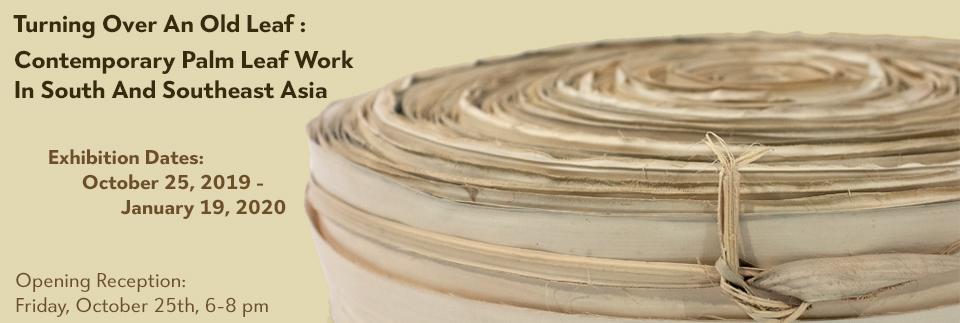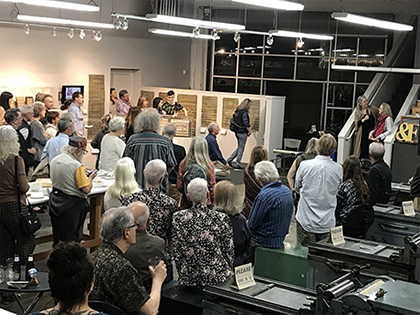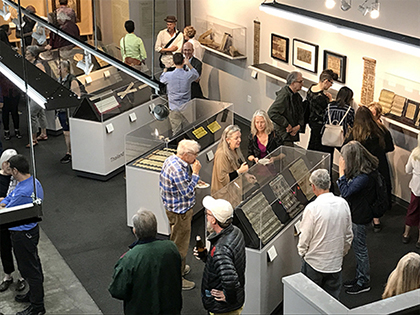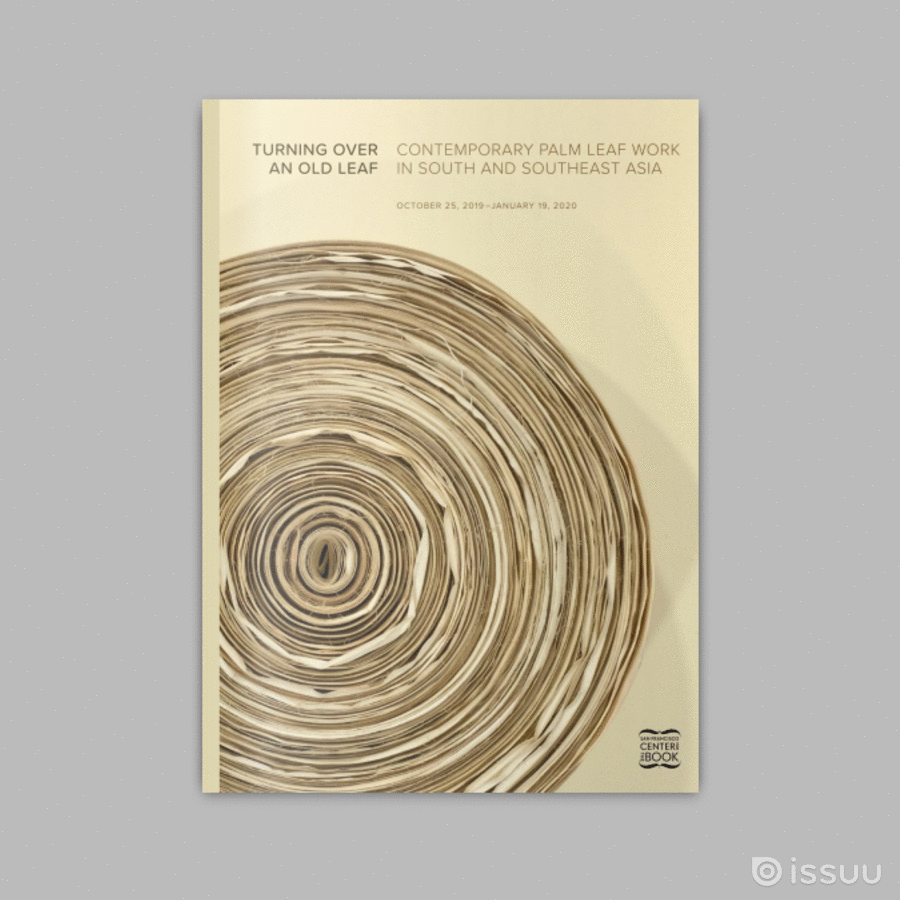Exhibition Run Dates :: October 25, 2019 – January, 19, 2020
Curators :: Mary Austin and Betsy Davids
Location :: San Francisco Center for the Book, 375 Rhode Island Street, San Francisco
(gallery visitors at the opening reception, October 25, 2019) (curators Mary Austin and Betsy Davids speak at the opening reception)
About the exhibition ::
In many South and Southeast Asian cultures, before printing, most books were palm leaf manuscripts: dried palm leaves, each leaf trimmed, incised and inked by hand, strung on a cord and stacked between wood covers to make a single copy of a book. Now that printed editions have replaced most of the earlier functions of palm leaf manuscripts, the traditional arts of palm leaf survive on different cultural and economic terms. This exhibition shows examples of work by contemporary palm leaf artists across five countries.
Betsy Davids and Mary Austin joined forces in 2015 to share and expand what we had each learned in India and Bali about palm leaf manuscripts and artwork both old and new. Return visits to Odisha, India deepened our familiarity with that impressive example of evolving a vibrant art form and building a viable present-day village economy on the strength of its arts. During visits to Sri Lanka and Thailand, we were heartened to find that ongoing Buddhist monastic teaching practices still keep in living memory the traditional knowledge of how to make palm leaf manuscripts of Buddhist texts. One university in Sri Lanka (the University of Kelaniya) and one in Thailand (Chiang Mai Rajabhat University) have established Palm Leaf Studies centers to support the whole range of activities necessary to maintain the heritage: scholarly work, conservation, digitization. The village community as a generative context for artmaking came to our attention again in Burma, where artists from the village of Ywar Ma, near Lake Inle, engrave themed sequences of Buddhist and astrological images on a distinctive stitched structure of palm leaves in covers of characteristically Burmese carved wood or molded resin, for purchase at temples and pagodas frequented by pilgrims and tourists. In urban Burma, the former capital city Mandalay showed us something that had eluded us elsewhere: a robust surviving practice of producing birth horoscopes on palm leaf, once common all over the region, now mostly supplanted by digital printouts. Palm leaf inscribing is thriving throughout Bali as an art for the tourist trade as well as a way to teach the next generation how to write and love palm leaf books. A growing community of young artists in the north of Bali are exploring the traditions of palm leaf inscription as an integral practice in their art.
Why should anyone make a palm leaf manuscript today? One manuscript scholar asked us that question. We could say: because the old palm leaf manuscripts and artwork are often beautiful, and the potential for that beauty lives on as a creative springboard for present and future to take further. Or: because palm leaves are a natural material that speaks to the senses with a tactile attraction, a distinctive aroma, a visual loveliness. And: because a maker can experience an embodied connection with an important cultural heritage, beyond what the mind knows and the eye sees.
The contemporary work presented in this exhibition speaks for itself. Our hope is that growing appreciation of this work, even here outside its region of origin, will nurture its creative evolution and the economic health of its makers. We hope too that book arts people here will find the work inspiring, as we did.
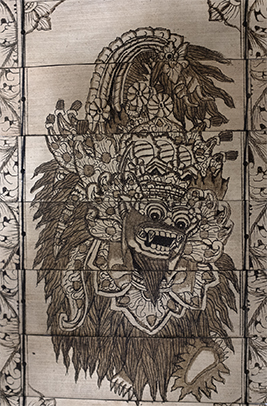
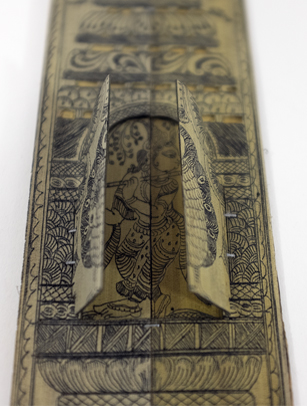
.jpg)
Exhibition Sponsors ::
Grants For The Arts | San Francisco Hotel Tax Fund | The Kahle Austin Foundation | Anonymous
Related Programming For This Exhibition ::
Studio In a Suitcase: Conservation With Limited Resources
Date: Wednesday, December 11, 2019, 6-8 pm
Location: San Francisco Center for the Book, 375 Rhode Island Street, San Francisco
Description: Karen Zukor of Zukor Art Conservation specializes in the repair and preservation of art and artifacts on paper - prints, drawings, watercolors, pastels, documents, maps, manuscripts, and rare books. In tandem with SFCB's exhibition Turning Over An Old Leaf: Contemporary Palm Leaf Work In South and Southeast Asia, this presentation will focus on the paper conservation and preservation work Karen has undertaken in Haiti and India, as well as some of the challenges of working outside of one’s own studio.
PanLex and the Digitization of Balinese Lontar Manuscripts
Date: Monday, December 16, 2020
Location: San Francisco Center for the Book, 375 Rhode Island Street, SF. CA. 94103
Description: PanLex is a San Francisco based nonprofit whose mission is to overcome language barriers to human rights, information, and opportunities. Earlier this year, in coordination with the Internet Archive (San Francisco, USA) and Udayana University (Denpasar, Indonesia), PanLex undertook the project of having palm-leaf images manually transcribed into Unicode text in Balinese script, so that the manuscripts would be readable and searchable by computer. David will discuss the technical and logistical challenges of digitizing these manuscripts, as well as Balinese typography, and the evolving Palm Leaf Wiki.
Date: Wednesday, January 15 2020, 6:00 - 8:00 pm
Location: San Francisco Center for the Book, 375 Rhode Island Street, San Francisco
Description: An evening of storytelling by co-curators Mary Austin and Betsy Davids, drawing upon the time-honored stories told through images in this exhibition's palm leaf work, as well as stories from their travels in search of this work through India, Bali, Sri Lanka, Burma (Myanmar), and Thailand.
Exhibition Catalog :: A fully illustrated catalog of this exhibition is available for purchase from SFCB. Purchase a copy here.
View online:

